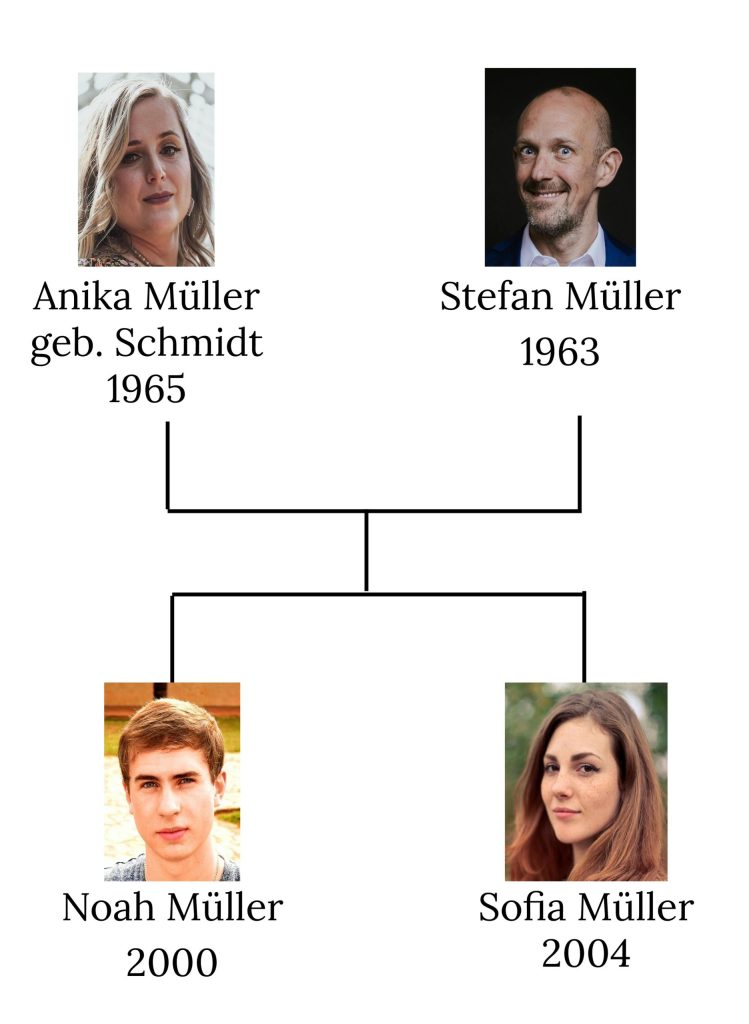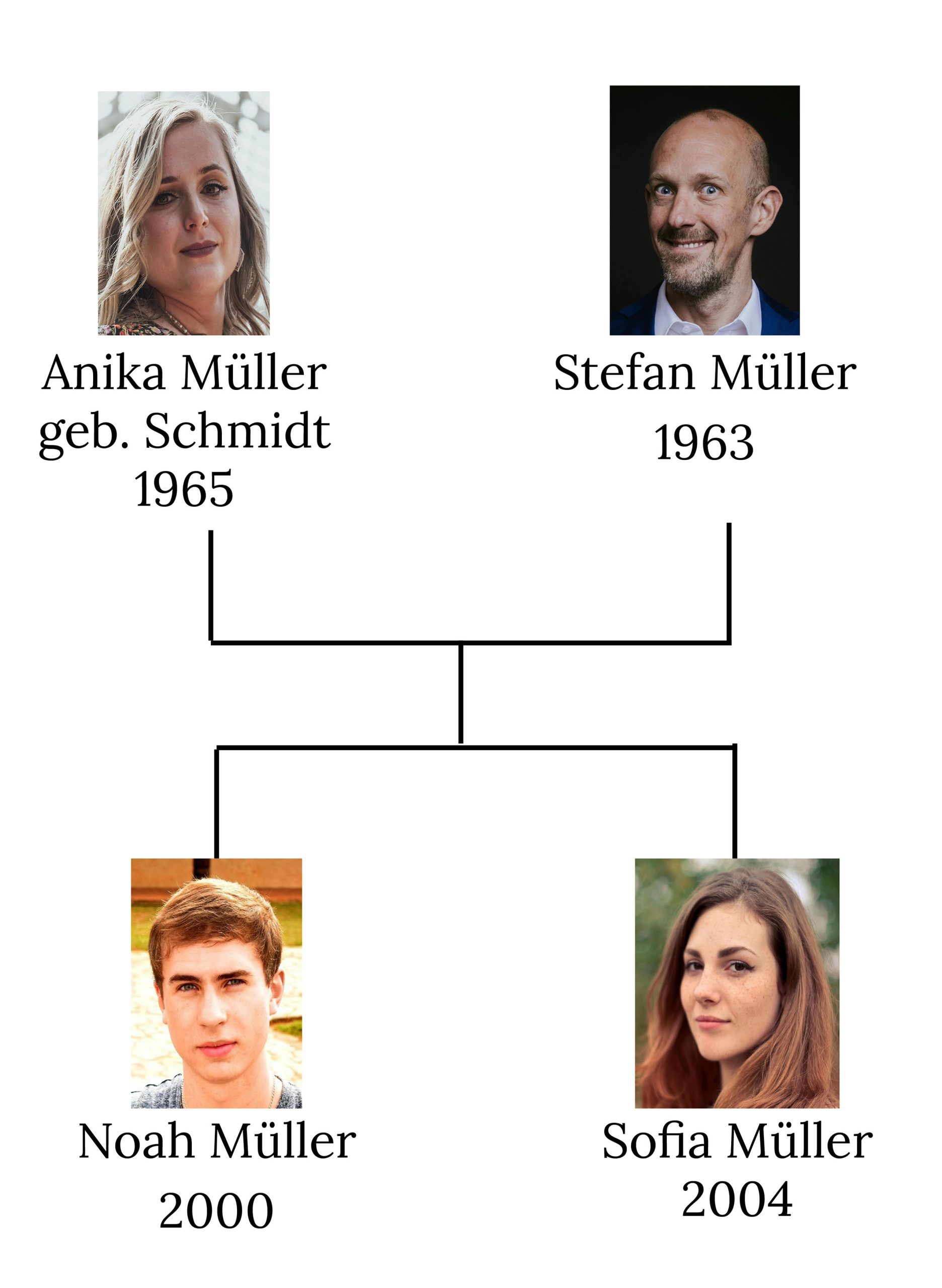2.5 Mein Stammbaum

Moin!
Let’s warm up with our Tagesminiplausch und Wiederholung.
Wiederholung
In the previous lesson, you learned how to say where your ancestors are from, as well as some German-speaking countries. Let’s review what you have learned in the past lessons by looking at Sofia’s family tree (Stammbaum).
 |
|
Lektionsüberblick
In this lesson, we will conclude our conversation on family and origins with a presentation of your family tree (Stammbaum). In the end, you will be able to 1) put together your family tree (Stammbaum), 2) give a presentation on your family based on the Stammbaum, and 3) use a Stammbaum to understand harder texts.
1) Stammbaum machen
a) Daten sammeln (Collect data): Since your Stammbaum should contain the Namen and Alter/Geburtsjahre of your core family members (mother, father, siblings), you should begin by collecting the necessary data. Look how Sofia organized her family information in fall 2024:
| Name | Geburtsjahr | Alter | |||
| selbst | Sofia Müller | 2004 | 20 | ||
| Mütter | 1 | Anika Müller geb. Schmidt | 1965 | 59 | |
| Väter | 1 | Stefan Müller | 1963 | 61 | |
| Brüder | 1 | Noah Müller | 2000 | 24 | |
| Schwestern | 0 |
Kleiner Hinweis
Jetzt bist du dran!
| Name | Geburtsjahr | Alter | ||
| selbst | ||||
| Mütter | ||||
| Väter | ||||
| Brüder | ||||
| Schwestern |
b) Stammbaum zeichnen (Draw family tree): With everything organized, you can draw your family tree either by hand or electronically. As you can see, Sofia included images of herself and her family members in her Stammbaum:
 |
Jetzt bist du dran! Choose a method (on paper or electronic) and draw your family tree!
|
2) Die Familie präsentieren
Now that your Stammbaum is ready, you can prepare your presentation on your family. First look at the sentences Sofia wrote down about herself and her family in preparation for her presentation:
| Hallo! Ich heiße Sofia Müller und ich bin 20 Jahre alt. Ich komme aus Hannover. Meine Vorfahren kommen aus Norddeutschland. Ich habe eine kleine Familie. Ich habe eine Mutter. Sie heißt Anika. Sie ist 59 Jahre alt. Ich habe einen Vater. Er heißt Stefan. Er ist 61 Jahre alt. Ich habe einen Bruder. Er heißt Noah. Er ist 24 Jahre alt. Ich habe auch eine Katze. Sie heißt Mia. Sie ist 2 Jahre alt. |
Sofia thinks about her presentation. She knows that her sentences are correct and she is sharing all of the necessary information. Then she decides to change some of her sentences. Can you tell the difference?
| Hallo! Ich heiße Sofia Müller und ich bin 20 Jahre alt. Ich komme aus Hannover. Meine Vorfahren kommen aus Norddeutschland. Ich habe eine kleine Familie. Ich habe eine Mutter, einen Vater, und einen Bruder. Das ist meine Mutter. Sie heißt Anika und ist 59 Jahre alt. Das ist mein Vater. Er heißt Stefan und ist 61 Jahre alt. Das ist mein Bruder. Er heißt Noah und ist 24 Jahre alt. Ich habe keine Schwestern, aber ich habe eine Katze. Sie heißt Mia und sie ist 2 Jahre alt. |
Which version do you prefer?
Jetzt bist du dran!
Zum Schluß

*As you conclude this lesson, don’t forget to check Canvas!*

Media Attributions
- Private: 1010-at-banner-large
- Stammbaum Sofia Mueller small

